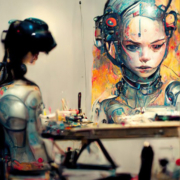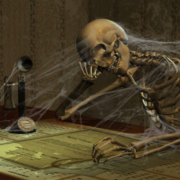What are you doing about your visual strategy in your content?
Having an effective visual strategy is as important as having an effective content marketing strategy!
As the debate gains momentum about AI’s capacity to create content, I prefer to focus on what I am trying to create. I am not an AI, at least not yet! If you start spiralling about all of that stuff from a content creator perspective, you’d never get any content out there. Also, I will have plenty to say on AI from a different contextualisation in other content.
For now, I want to talk about why having a strong visual strategy is key to effective content creation.
I have, over the years, invested – time and money – in visual and video production as part of my own content creation and the services I offer. I have done this for several reasons: Visual content fits my social entrepreneurship goals in terms of the type of content I create – knowledge transfer essentially – to people across the globe. Secondly, I am convinced that visuals are a powerful medium and, done right, can transcend cultures and mindsets. That is not to say that text is not, rather, when text and visuals are paired strategically, my belief is that it just works better. Humans like visual imagery. The third reason is that I just love the combining of all the different creative elements despite the significant learning curve involved in acquiring the different skills involved in visual and video creation: learning how to use all the equipment, conceptualising, scripting, filming, lighting, audio, mood, and let’s not forget how much goes on in editing which, believe me, is no simple thing to learn.
But it’s been so worth it. I love the whole creative whole process from start to finish though at times, I get very frustrated that my creative expression is limited by my skill level, not by my mind.
I mentioned the importance of ‘strategic pairing of visuals with text’, and this is important for all content, especially when you are an entrepreneur building your business, articulating your mission and trying to generate interest and clients. A lot of entrepreneurs don’t do this because of time constraints or a lack of skills. Whatever the reason, if you are not doing this, then it is a missed opportunity.
When you look at big charities, they do this strategic pairing of image and text very well to create emotion in the viewer to propel them to take some action, usually to donate. Just take a look through Doctors without Borders campaigns to see some of the best pairing – video and visuals. The images are as important, if not more so, than the text, it transmits an unfamiliar reality to the viewer to create awareness and prepare the call to action.
Text can, at times,, limit the extent to which emotion and mood are conveyed unless the writer is of a certain calibre and the reader is not far off. Even when the writer is talented, pairing the text with a strong, powerful visual – photographic or video -will enhance it.
My point is that having an effective visual strategy is as important as having an effective content marketing strategy and goes hand in hand. I am not talking about branding here, though branding will, of course, set a visual tone. I myself, when still ignorant about the importance of having a visual strategy, used to just throw onto my text the first stock photo I would quickly find that vaguely ‘matched’ the topic I was writing about. Now, I try to be much more intentional about my visual choices as I come to realise the additional power visuals afford, even when it takes double or triple my time!
When looking at other people’s content, I grew more visually aware and noticed how I felt nothing when I would see the typical, posed stock photos attached to a quality text and the difference when the pairing was more powerful. I started to take more time to choose my visuals and to adapt them in some way to be sure I was conveying emotion aligned with the text or vice versa. The same goes for the auditive experience.
When I produce my videos now, I take more care about the setting behind the camera, the mood and the music I choose, and the quality of the audio I record. Before, I’d just switch on the computer camera and mic and start talking. Now, I take my time at each stage and see the improvement in quality.
It’s true, I have had to spend time navigating all the multiple learning curves at once, and it never ends. But there’s a different joy in creative learning, and at the end of the day, navigating learning curves is what being an entrepreneur is all about, isn’t it? There is joy in learning new skills that help you to explore new depths of creativity – depths that so many of us have buried under mountains of ‘rational’ thinking, sacrificed to the false urge to rush everything, or are so bound up in survival that creativity has abandoned us.
Ah, yes, but this is a text about the importance of having a visual strategy that accompanies your content marketing and the marketing of your content. I digress! Video is important, and visuals are important, so take your time. They should not be considered quick add-ons. Point and shoot if you must, but think first about what your goals are and design your words, visuals, film and sound to work together. You’ll see, it may take longer, but it will be stronger, and you’ll learn more.
Sometimes it can be disheartening to know that something you’ve spent hours on, yes, a 1-minute video takes hours to plan, script, record, edit and upload, is not seen, but keep at it because, as I always say, you never know who is watching.
Make your content creation as much about re-learning creativity and exploring new ways to express it, and you will rarely be disheartened. Start by not using stock photos, or if you do, then modify them creatively. Yes, I know Canva and other software are fast, easy, and done for you, not by you. When creative work is done by you,you will feel differently.
The danger about getting technology to ‘do’ creative work for us, apart from the potential impact on jobs, is that, as humans, we become even less creatively productive than we already are. There is the danger that AI finishes off the relentless destruction of the innate creativity in each of us that schooling, academia and the job market started.
As we strive to make AI more ‘human-like’, I have to wonder, are we going to make ourselves less so.
PS: The photo I used was a stock photo, perhaps to prove a point. (and because I’m painting a different kind of canvas!)
If you haven’t already, connect, follow, subscribe…



